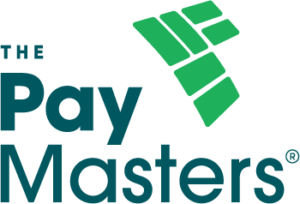We are often asked what the differences are between New Zealand and our neighbours in Australia so hopefully the following helps in relation to Payroll Legilsation at least. This post just covers Australia and a following one will outline New Zealand’s.
In Australia there is employment legislation called “Fair Work Act 2009”
Employees are covered by the NES (National Employment Standards), which states the 10 minimum workplace entitlements, and may also be cover by a “Modern Award”.
The National Employment Standards
The Fair Work Act 2009 provides you with a safety net of minimum terms and conditions of employment through the National Employment Standards (NES).
There are 10 minimum workplace entitlements in the NES:
- A maximum standard working week of 38 hours for full-time employees, plus ‘reasonable’ additional hours.
- A right to request flexible working arrangements.
- Parental and adoption leave of 12 months (unpaid), with a right to request an additional 12 months.
- Four weeks paid annual leave each year (pro rata).
- Ten days paid personal/carer’s leave each year (pro rata), two days paid compassionate leave for each permissible occasion, and two days unpaid carer’s leave for each permissible occasion.
- Community service leave for jury service or activities dealing with certain emergencies or natural disasters. This leave is unpaid except for jury service.
- Long service leave.
- Public holidays and the entitlement to be paid for ordinary hours on those days.
- Notice of termination and redundancy pay.
- The right for new employees to receive the Fair Work Information Statement.
Modern Awards
In addition to the NES, you may be covered by a modern award. These awards cover an industry or occupation and provide additional enforceable minimum employment standards. There is also a Miscellaneous Award that may cover employees who are not covered by any other modern award.
Modern awards may contain terms about minimum wages, penalty rates, types of employment, flexible working arrangements, hours of work, rest breaks, classifications, allowances, leave and leave loading, superannuation, and procedures for consultation, representation, and dispute settlement. They may also contain terms about industry specific redundancy entitlements.
If you are a manager or a high income employee, the modern award that covers your industry or occupation may not apply to you. For example, where your employer guarantees in writing that you will earn more than the high income threshold, currently set at $133,000 per annum and indexed annually, a modern award will not apply, but the NES will.
Transitional arrangements to introduce the modern award system may affect your coverage or entitlements under a modern award.
Other agreements
You may be on an employment contract, an IFA (Individual Flexibility Arrangement) or your employer may have an EA (Enterprise Agreement).
Who’s covered by the NES
All employees in the national workplace relations system are covered by the NES regardless of the award, registered agreement or employment contract that applies.
Casual employees and the NES
Casual employees only get NES entitlements relating to:
- unpaid carer’s leave
- unpaid compassionate leave
- community service leave
- the Fair Work Information Statement.
In some states and territories long serving casuals are eligible for long service leave.
Annual Leave
All employees (except for casual employees) get paid annual leave.
Full-time and part-time employees get 4 weeks of annual leave, based on their ordinary hours of work.
Shift workers may get up to 5 weeks of annual leave per year.
Annual leave accumulates from the first day of employment, even if an employee is in a probation period.
The leave accumulates gradually during the year and any unused annual leave will roll over from year to year.
Annual leave accumulates even when an employee is on paid leave including paid annual leave and personal leave.
Annual leave does not accumulate when the employee is on:
- unpaid annual leave
- unpaid sick/carer’s leave
- unpaid parental leave.
The Australian Government’s Paid Parental Leave Scheme is not considered to be paid leave. An employee does not accumulate annual leave while being paid by the Paid Parental Leave Scheme.
Annual leave is paid at the employee’s base pay rate for all ordinary hours worked, not including extra payments such as:
- overtime rates
- penalties
- allowances
- bonuses.
Awards, enterprise agreements and other registered agreements can set out:
- a different method of payment for annual leave
- that annual leave loading is paid for annual leave
Cashing out annual leave means an employee receives payment instead of taking time off work.
Annual leave can only be cashed out when an award, enterprise agreement or other registered agreement allows it.
Certain rules apply when cashing out annual leave:
- an employee needs to have at least 4 weeks annual leave leftover
- a written agreement needs to be made each time annual leave is cashed out
- an employer can’t force or pressure an employee to cash out annual leave
- the payment for cashed out annual leave has to be the same as what the employee would have been paid if they took the leave.
Sick & Carer’s Leave
All employees except casuals are entitled to paid sick and carer’s leave.
Sick and carer’s leave comes under the same leave entitlement. It’s also known as personal / carer’s leave.
Employees get:
- 10 days each year for full-time employees
- pro rata of 10 days each year depending on their hours of work for part-time employees.
Full-time and part-time employees accumulate sick and carer’s leave during a year of work. It starts to build up from an employee’s first day of work and is based on the number of hours they work.
The balance at the end of each year carries over to the next year.
Sick and carer’s leave continues to accumulate when an employee is on paid leave such as paid annual leave or paid sick leave. It doesn’t accumulate on periods of unpaid leave, such as unpaid parental leave.
Sick and carer’s leave is paid at an employee’s base pay rate for each hour or part of an hour of leave they take.
An employee who takes paid sick or carer’s leave is only paid for the hours they would normally work (not including overtime hours).
A base pay rate doesn’t include separate entitlements such as:
- incentive-based payments
- bonuses
- loadings
- allowances
- overtime
- penalty rates.
Long Service Leave
An employee gets long service leave after a long period of working for the same employer.
Most employees’ entitlement to long service leave comes from long service leave laws in each state or territory. These laws set out:
- how long an employee has to be working to get long service leave (eg. after 7 years)
- how much long service leave the employee gets.
In some states and territories long serving casuals are eligible for long service leave.
Long service leave is paid at the employee’s ordinary pay rate. The ordinary pay rate is the employee’s base pay rate for their usual hours of work and doesn’t include:
- allowances
- shift loadings
- penalties
- overtime.
Final pay
Final pay is what an employer owes an employee when their employment ends.
An award, employment contract, enterprise agreement or other registered agreement can specify when final pay must be paid. If it doesn’t then it’s best practice for an employee to be paid on their last day of work or on the next scheduled pay day.
Final pay payments
An employee should get the following entitlements in their final pay:
- outstanding wages for hours they have worked, including penalty rates and allowances
- any accumulated annual leave
- if it applies:
- annual leave loading
- accrued or pro rata long service leave
- redundancy pay.
Sick and carer’s leave is not paid out when employment ends.
If an employee gets annual leave loading during employment then it has to be paid out when employment ends.
Annual leave loading is paid out even when an award, registered agreement or employment contract says that it’s not.
These entitlements apply as at July 2015 and are provided solely to help our readers understand the differenecs and should not be taken as legal opinion.






